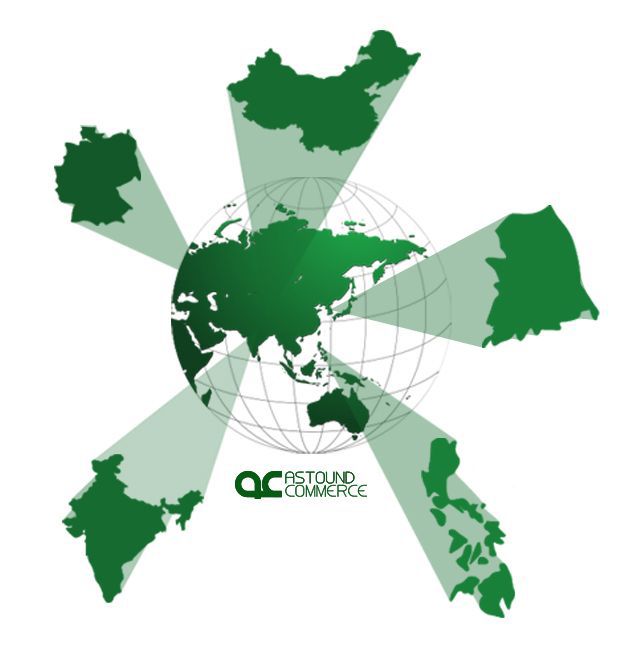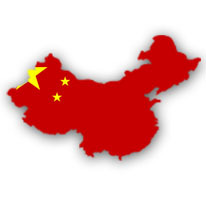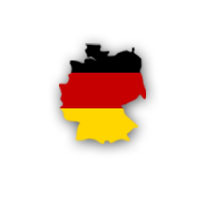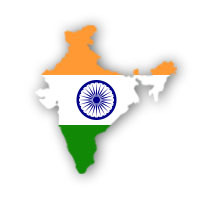Promising e-commerce markets
The first online store appeared in America in 1994. In 1998, his turnover increased one billion dollars. Since then, the United States has been considered the world's leading e-commerce company for the past 20 years. Today, the Asia-Pacific region is becoming the world's largest e-commerce market , putting North America in the background.

According to the latest study of E-Marketer B2C e-commerce, sales in the world will grow by 20.1% this year and reach $ 1.5 trillion. Growth will occur mainly due to the increasing number of users of mobile devices and the Internet in emerging markets, the penetration of mobile sales, the development of delivery and payment options and the entry of international brands into new markets.
')
In 2014, Asians will spend more on online purchases for the first time than Americans. Thus, a new largest regional e-commerce market is emerging. This year, B2C e-commerce sales are expected to reach $ 525.2 billion in the Asia-Pacific region, compared with $ 482.6 billion in North America.
China

China will receive 6 of every 10 dollars spent this year on e-shopping in the Asia-Pacific region, and about of all regional spending by 2017.
So far China’s e-commerce market is second only to the United States, but not for long. By 2016, China will overtake the United States in costs. Strengthening China, as well as India and Indonesia, is catalyzing the growth of the Asia-Pacific region as a whole.
These countries, along with Argentina, Mexico, Brazil, Russia, Italy and Canada, stimulate growth in the share of sales in the e-commerce segment around the world.
The increase in sales in emerging markets is largely due to the large population of these countries, which goes online and develops online shopping. The Asia-Pacific region claims to 46% of virtual buyers worldwide in 2014, which is only 16.9% of the region’s population.
E-commerce penetration remains low in Eastern Europe, Latin America and the Middle East and in Africa. But in North America and Western Europe, most residents regularly shop through digital channels.
Top 10 e-commerce markets by turnover. Average expenditure per customer per year

Germany

In Central Europe, Germany remains the leader in e-commerce - it generates 25% of the total turnover in the region. E-commerce will be almost half of the German GNP by 2017. 77% of the German population is present online (almost 63 million), which makes the country the most important European online shopping market. 42 million Germans - this is 52% of the population of the country; today they shop on the Internet. The annual turnover in 2013 amounted to 63,400,000 euros.
For comparison, last year the average annual spending on online purchases in Western Europe amounted to $ 2,540, and in India, $ 665 per person.
India

India currently has more than 200 million Internet users, 89 million visit online stores. The number of people actually shopping is much smaller - 14-15 million. Quantitatively, this is not so small if we compare, for example, with the whole of Northern Europe, where 19 million people make online purchases and the potential for growth has already been exhausted.
EBay came to India nine years ago through the acquisition of Baazee.com. The whole evolution of e-commerce has occurred in India in about 15 years. In developed markets such as the USA, it took 50-60 years.
The growth of the e-commerce industry here is 55-60% per year, from $ 2.1 billion to $ 3.2 billion in 2014.
South Korea

South Korea was the tenth largest international market in 2013 in terms of sales. The potential for moving e-commerce forward is growing here. Almost 80% of the country's population is present in the network, which makes South Korea the most connected country on the planet. The top buyers who shopped on the BorderFree platform spent an average of $ 791 each last year. Retail e-commerce is projected to increase spending from a total of $ 19.0 billion in 2013 to $ 25.3 billion by 2017, increasing by more than 33%.
Philippines

The Philippines is fast becoming one of the four “hot e-commerce markets,” according to the Association of Southeast Asian Nations, and the local economy is a fertile market for online sales. Filipinos are also among the most active users of social media around the world. The use of Facebook is almost universal. Based on data from the International Telecommunications Union, Internet penetration in the Philippines remains low - only 36%, but as many as 35 million users are online.
In contrast, Singapore has a higher penetration of the Internet - 74%, but only 3.9 million are online. In Malaysia, penetration was 65.8%, with a population of 19 million.
In contrast to the export-oriented economies of most Asian countries, more than 70% of Philippine GDP comes from consumption. In terms of logistics, the Philippines has loyal prices for the delivery of consumer goods thanks to foreign companies such as FedEx and DHL.
As it has already become clear to everyone, the next online store needs to be done for Filipinos. And there are several reasons for this:
- no difficulties with localization. The Philippines is the third largest English-speaking state after the United States and the United Kingdom.
- The Philippines ranks 12th among the most densely populated countries in the world, the population of this country is 90 million people.
- the mobile version of the store is a must. Almost all Philippine intercity buses have free Wi-Fi.
- And even buses - the coldest place in the Philippines. Buy & Chill.
- Abortions and divorces are prohibited in the Philippines.
- Filipinae most often do not shave their legs.
Despite the last two deterrent factors, these considerations make the prospect of entering the e-commerce market of the Philippines very attractive.

According to the latest study of E-Marketer B2C e-commerce, sales in the world will grow by 20.1% this year and reach $ 1.5 trillion. Growth will occur mainly due to the increasing number of users of mobile devices and the Internet in emerging markets, the penetration of mobile sales, the development of delivery and payment options and the entry of international brands into new markets.
')
In 2014, Asians will spend more on online purchases for the first time than Americans. Thus, a new largest regional e-commerce market is emerging. This year, B2C e-commerce sales are expected to reach $ 525.2 billion in the Asia-Pacific region, compared with $ 482.6 billion in North America.
China

China will receive 6 of every 10 dollars spent this year on e-shopping in the Asia-Pacific region, and about of all regional spending by 2017.
So far China’s e-commerce market is second only to the United States, but not for long. By 2016, China will overtake the United States in costs. Strengthening China, as well as India and Indonesia, is catalyzing the growth of the Asia-Pacific region as a whole.
These countries, along with Argentina, Mexico, Brazil, Russia, Italy and Canada, stimulate growth in the share of sales in the e-commerce segment around the world.
The increase in sales in emerging markets is largely due to the large population of these countries, which goes online and develops online shopping. The Asia-Pacific region claims to 46% of virtual buyers worldwide in 2014, which is only 16.9% of the region’s population.
E-commerce penetration remains low in Eastern Europe, Latin America and the Middle East and in Africa. But in North America and Western Europe, most residents regularly shop through digital channels.
Top 10 e-commerce markets by turnover. Average expenditure per customer per year

Germany

In Central Europe, Germany remains the leader in e-commerce - it generates 25% of the total turnover in the region. E-commerce will be almost half of the German GNP by 2017. 77% of the German population is present online (almost 63 million), which makes the country the most important European online shopping market. 42 million Germans - this is 52% of the population of the country; today they shop on the Internet. The annual turnover in 2013 amounted to 63,400,000 euros.
For comparison, last year the average annual spending on online purchases in Western Europe amounted to $ 2,540, and in India, $ 665 per person.
India

India currently has more than 200 million Internet users, 89 million visit online stores. The number of people actually shopping is much smaller - 14-15 million. Quantitatively, this is not so small if we compare, for example, with the whole of Northern Europe, where 19 million people make online purchases and the potential for growth has already been exhausted.
EBay came to India nine years ago through the acquisition of Baazee.com. The whole evolution of e-commerce has occurred in India in about 15 years. In developed markets such as the USA, it took 50-60 years.
The growth of the e-commerce industry here is 55-60% per year, from $ 2.1 billion to $ 3.2 billion in 2014.
South Korea

South Korea was the tenth largest international market in 2013 in terms of sales. The potential for moving e-commerce forward is growing here. Almost 80% of the country's population is present in the network, which makes South Korea the most connected country on the planet. The top buyers who shopped on the BorderFree platform spent an average of $ 791 each last year. Retail e-commerce is projected to increase spending from a total of $ 19.0 billion in 2013 to $ 25.3 billion by 2017, increasing by more than 33%.
Philippines

The Philippines is fast becoming one of the four “hot e-commerce markets,” according to the Association of Southeast Asian Nations, and the local economy is a fertile market for online sales. Filipinos are also among the most active users of social media around the world. The use of Facebook is almost universal. Based on data from the International Telecommunications Union, Internet penetration in the Philippines remains low - only 36%, but as many as 35 million users are online.
In contrast, Singapore has a higher penetration of the Internet - 74%, but only 3.9 million are online. In Malaysia, penetration was 65.8%, with a population of 19 million.
In contrast to the export-oriented economies of most Asian countries, more than 70% of Philippine GDP comes from consumption. In terms of logistics, the Philippines has loyal prices for the delivery of consumer goods thanks to foreign companies such as FedEx and DHL.
As it has already become clear to everyone, the next online store needs to be done for Filipinos. And there are several reasons for this:
- no difficulties with localization. The Philippines is the third largest English-speaking state after the United States and the United Kingdom.
- The Philippines ranks 12th among the most densely populated countries in the world, the population of this country is 90 million people.
- the mobile version of the store is a must. Almost all Philippine intercity buses have free Wi-Fi.
- And even buses - the coldest place in the Philippines. Buy & Chill.
- Abortions and divorces are prohibited in the Philippines.
- Filipinae most often do not shave their legs.
Despite the last two deterrent factors, these considerations make the prospect of entering the e-commerce market of the Philippines very attractive.
Source: https://habr.com/ru/post/232701/
All Articles